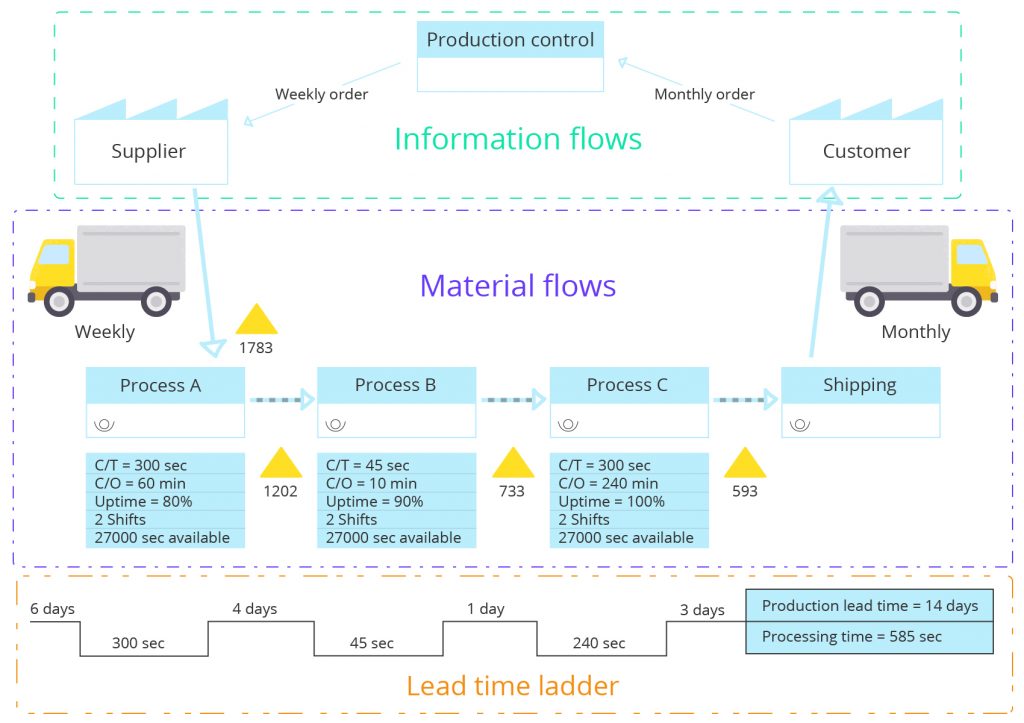7 Basic Software Development Models: Which One to Choose?

Software engineering is a very complex process. Software development models have been created to simplify it.
These models are also known as Software Development Life Cycle (SDLC) models/methodologies. They are helpful for spotting errors in software creation before they’re discovered in successive stages. But most importantly, SDLC methodologies help to get everything right the first time.
In today’s post, we are going to discuss 7 SDLC methodologies:
- Waterfall
- Agile
- Lean
- Iterative
- Prototyping
- Spiral
- DevOps
Each of these methodologies has its own distinctions, but their common purpose is organizing project management. This enables teams to produce high-quality software as cost-effectively and quickly as possible.
A review of the 7 most popular SDLC methodologies may help you pick the most suitable model for your project.
1. Waterfall Model
The Waterfall model refers to a cascading waterfall. It’s the earliest of all SDLC methodologies. It’s a linear sequential flow: when one stage is completed, the work is started on the subsequent stage.
The primary drawback of the Waterfall model is inflexibility. It’s surely easy enough for understanding and simple for managing. But if there’s a delay early on, the entire project can be prolonged beyond what is expected. With very limited room for review and revisions, once a phase is finished, issues can’t be repaired until the product is in the maintenance stage. Hence, the methodology doesn’t work well when there’s a need for flexibility with long-term and ongoing projects.
2. Agile Software Development
Agile software development has been with us for about a decade. Many IT companies use it. Some businesses are so appreciative of the Agile modeling that they are now using it for non-tech projects.
The Agile methodology helps teams spot and tackle minor issues during software development. It’s important before they morph into more serious problems. The Agile method creates continuous release cycles, where tiny incremental changes from the previous release are implemented. There’s product testing at each iteration. The involvement of business stakeholders and their feedback is highly welcomed in the development process.
Scrum is one of the most popular Agile frameworks. It is used for the development of software products or services with special attention to continual delivery so as not to overburden the development team. (You can read more about Scrum Agile Model in our previous blog).
Kanban methodology is another Agile framework whose goal is to help teams work with less friction and more effectiveness. Kanban system and task boards are Agile project management tools for coordinating tasks of project teams.

A Kanban board helps to visually describe work at various phases of the work process. Each column represents a particular stage of the process. The board is an example of how the Kanban approach can be implemented for managing work at a personal and organizational level.
A common question is when to use Agile models of software development. They work for any type of project, but the value for businesses that use them include:
- Lower cost;
- Fast releases;
- Clients are happier with the end product. This is possible due to improvements and involving clients in development decisions throughout the process;
- More open communication between the teams and clients;
- Competitive advantage to the team thanks to spotting defects and making changes throughout the development process rather than at the end;
- Consistent evaluations to assess the product against the expected outcomes promotes faster changes throughout the development process;
- Greater project transparency. It is achieved due to regular meetings with the clients and systems. That allows all the involved parties to access the project data and progress;
- Early and consistent feedback for quick improvement of a project.
3. Lean Model
The goal of any Lean transformation is to improve the health of the entire organization. Lean production practices and principles were used by Toyota to cut down on waste and inefficiency in the production area. The seven Lean principles are:
- eliminate waste (the non-value-added components in any process)
- emphasize constant learning
- decide as late as possible
- deliver as fast as possible
- empower the team
- build up integrity
- see the whole picture
The core idea is to maximize customer value while minimizing waste. Lean methodology is a way of optimizing the people, effort, resources, and energy of your organization toward creating value for the customer.
So Lean model is based on continuous improvement and respect for people. All employees are called on to continually improve services and provide value with less effort. It also means optimizing operations and supporting processes for all critical applications and services.
The Lean methodology has also embraced the idea of stream maps to eliminate waste due to duplicate effort and inefficient processes.

Lean value stream mapping allows companies to see how their value flows in different functions, and then make decisions on what brings most customer satisfaction.
4. Iterative and Incremental Method
The Iterative Model is built on repetitions. Without full requirements, project teams work on implementing a set of known software requirements. After that, testing and evaluation are done. Further requirements are pinpointed. With each iteration or phase, a new version of the software is produced. There’s plenty of rinsing and repeating until the final product is ready.
The advantage of the Iterative model is that it helps to have a working version of the product early on in the process. Thus it makes it less expensive to implement changes. The drawback: frequent repetitions take up resources quickly.
5. Prototyping
A prototype is a version of a system that is developed quickly to see if the customer is happy with it. The client’s involvement in the development process increases the chances that the final product will be accepted early on.
Prototyping is useful when the customer or developer are not 100% sure about a design’s feasibility, product requirements, algorithms, business rules, etc.
The phases of a prototyping process are:

6. Spiral Method
The Spiral model is considered to be one of the most flexible SDLC methodologies. It takes its cue from the repetitions inherent for the Iterative model. There are four stages for the project to go through:
- planning
- risk analysis
- engineering
- evaluation
These phases are repeated over and over in a “spiral,” making room for multiple rounds of improvement.
The Spiral model is mainly used for large projects. It allows development teams to include user feedback early on and create a highly customized product. Another advantage of this SDLC model is how it handles risk management. Each iteration is started after a serious analysis of potential risks and thinking through how to duck or decrease them.
7. DevOps Model
The DevOps methodology is new to the SDLC arena. DevOps emerged from two trends: the application of Agile and Lean methodologies. These models were used by operations teams. The emphasis here is on valuing the cooperation between the development and operations personnel throughout the SDLC process.
In a DevOps model, the developers and operations teams collaborate closely — and sometimes as one team — to hasten innovation and the delivery of higher-quality and more reliable software products and functionalities. There are small but frequent updates to products. The hallmarks here are discipline, continuous feedback, and process enhancement.
Summary

We have covered 7 common software development models. Let us remind you of their benefits.
- The Waterfall model is mostly used on smaller projects where the requirements are clear and there’s no need to change them quickly. It’s a well-structured approach. The stages are well-defined and easy to understand for all.
- Agile and Lean models suit small- and medium-sized projects with rapid changes required. The customer is involved during each stage. Limited planning is required to get started with a project. Businesses save both money and time as each iteration is discussed closely between the customer and the development team.
- The Iterative and Incremental methods are a good match for large projects. Initial versions of the software are generated early on. That facilitates customer evaluation and feedback.
- The Prototyping model helps to visualize some ingredients of the software. That helps to avoid misunderstanding between the client and the development team.
- The Spiral model combines the elements of the Prototyping and Waterfall models. The Spiral methodology is suitable for large, complex, and expensive projects. Its benefits are risk-management and stage-by-stage development.
- The DevOps is a newbie model. It allows for continuous software development, faster resolution of problems, happier, more productive teams, and higher employee engagement.
Here at Alternative-spaces, we use a number of SDLC options depending on the project. Most often, projects need to be performed by means of more flexible models (i.e., Agile-based Scrum and Kanban and Lean methodology) for the optimal software development process.
It’s equally vital to gather a good team of professionals who are devoted to propelling the project forward through every iteration. We are here to offer you the best IT engineers to fulfill any project you might have. The choice of methodology depends on your unique project and interests. Contact us and we’ll be happy to help!
Content created by our partner, Onix-systems.
 Home
Home